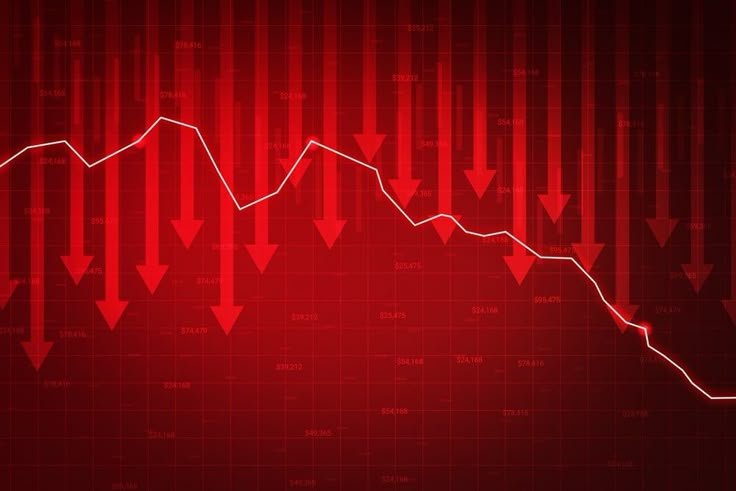Forex trading offers multiple strategies, but two of the most popular approaches are scalping and swing trading. Each style has its own set of advantages, challenges, and suitability based on a trader’s personality, risk tolerance, and time commitment. Understanding the key differences between forex scalping and swing trading helps traders choose the strategy that aligns with their goals and trading psychology.
Understanding Forex Scalping
Scalping involves executing multiple trades in a short period, often within seconds or minutes. Traders aim to capture small price movements, leveraging high-frequency trading techniques. Scalpers rely on technical indicators, tight stop-loss orders, and fast execution to capitalize on quick price changes.
Key Characteristics of Forex Scalping:
- Short Holding Period – Trades last for seconds to minutes, rarely extending beyond an hour.
- High Trade Frequency – Traders execute multiple trades daily, sometimes hundreds.
- Small Profit Targets – Profit per trade ranges from 5 to 10 pips.
- Tight Stop-Loss Orders – Risk management relies on quick exit strategies.
- High Leverage Usage – Small price movements require significant leverage to maximize profits.
- Technical Analysis Dependence – Scalpers focus on charts, moving averages, and momentum indicators.
Pros of Forex Scalping:
- Quick Profits – Scalping generates small but frequent profits throughout the day.
- Low Exposure to Market Risk – Short holding periods reduce exposure to major economic events and overnight risks.
- Frequent Trading Opportunities – High volatility provides multiple trading setups daily.
Cons of Forex Scalping:
- High Transaction Costs – Frequent trades lead to higher spreads and commissions.
- Stress and Intensity – Scalping demands intense focus and quick decision-making.
- Requires Fast Execution – Delays in trade execution can impact profitability.
Understanding Swing Trading
Swing trading involves holding trades for several hours to days, aiming to capture larger price movements. Swing traders rely on technical and fundamental analysis to identify potential trend reversals or breakouts.
Key Characteristics of Swing Trading:
- Longer Holding Period – Trades last from several hours to a few days.
- Moderate Trade Frequency – Traders execute a few trades per week.
- Larger Profit Targets – Swing traders aim for 50 to 200 pips per trade.
- Fundamental and Technical Analysis Combination – Traders assess economic indicators, interest rates, and chart patterns.
- Moderate Risk Exposure – Holding trades overnight exposes traders to potential market gaps.
- Less Time-Intensive – Swing trading does not require constant monitoring of charts.
Pros of Swing Trading:
- Higher Profit Potential – Capturing larger price swings allows for significant gains per trade.
- Lower Trading Costs – Fewer trades mean lower commissions and spread costs.
- Less Stressful – Traders do not need to watch the market constantly.
- More Time for Analysis – Swing traders can carefully plan their entries and exits.
Cons of Swing Trading:
- Overnight Risk – Holding trades overnight exposes positions to market gaps and unexpected news.
- Longer Drawdowns – Price retracements can test patience and require proper risk management.
- Fewer Trading Opportunities – Swing traders may wait days for a solid setup.
Key Differences Between Scalping and Swing Trading
| Factor | Scalping | Swing Trading |
|---|---|---|
| Trade Duration | Seconds to minutes | Hours to days |
| Number of Trades | Dozens to hundreds per day | A few per week |
| Profit Per Trade | 5-10 pips | 50-200 pips |
| Market Exposure | Short-term, minimal overnight risk | Long-term, exposed to overnight risks |
| Stress Level | High, requires constant attention | Lower, allows for analysis and patience |
| Trading Costs | High due to frequent trades | Lower due to fewer transactions |
| Risk Tolerance | Low tolerance for long drawdowns | Moderate tolerance required |
| Technical vs. Fundamental Analysis | Heavily reliant on technical indicators | Uses both technical and fundamental factors |
Which Trading Style Suits You?
Choosing between scalping and swing trading depends on individual preferences, experience level, and risk appetite.
You Should Choose Scalping If:
- You enjoy fast-paced decision-making.
- You can handle high-intensity trading for several hours.
- You have access to fast execution platforms and low spreads.
- You can dedicate time to watching the market actively.
- You prefer short-term profits with minimal exposure to overnight risks.
You Should Choose Swing Trading If:
- You have a full-time job or other commitments and cannot monitor the market all day.
- You prefer strategic trading with detailed analysis before entering trades.
- You are comfortable holding trades for longer periods.
- You have the patience to wait for the best trade setups.
- You want to minimize transaction costs and avoid frequent commissions.
Risk Management in Scalping and Swing Trading
Risk management plays a crucial role in both strategies, though each requires different approaches.
Risk Management for Scalping:
- Use tight stop-loss orders to cut losses quickly.
- Maintain a favorable risk-to-reward ratio (1:1 or better).
- Control leverage carefully to avoid excessive losses.
- Choose a broker with low spreads and fast execution.
- Avoid emotional trading; stick to a disciplined strategy.
Risk Management for Swing Trading:
- Set wider stop-loss orders to allow price fluctuations.
- Ensure a strong risk-to-reward ratio (1:2 or higher).
- Use position sizing to manage risk exposure.
- Monitor fundamental factors that impact long-term trends.
- Avoid overtrading and wait for high-probability setups.
Common Mistakes to Avoid
Scalping Mistakes:
- Overtrading: Entering too many trades without a solid plan.
- Ignoring Spread Costs: High transaction costs can erode profits.
- Emotional Decision-Making: Acting impulsively rather than following a strategy.
Swing Trading Mistakes:
- Lack of Patience: Exiting trades too early instead of letting profits run.
- Ignoring Stop-Loss Orders: Holding losing positions for too long.
- Not Factoring in Fundamentals: Over-relying on technical analysis without considering economic events.
Conclusion
Scalping and swing trading both offer unique advantages and challenges. Scalping suits traders who thrive in fast-paced environments and can dedicate time to active trading. Swing trading, on the other hand, benefits those who prefer a slower approach with more analytical decision-making.
Choosing the right trading style depends on your time availability, risk tolerance, and personality. If you enjoy quick trades with small profits, scalping might be the best option. If you prefer calculated decisions with larger gains, swing trading could be the right fit. By understanding both strategies, traders can develop a personalized approach that aligns with their financial goals and lifestyle.




